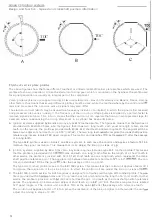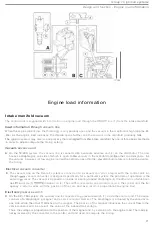
Group
28
Ignition systems
D
esign
and function
- Compensation functions
r---
o
-16
..1
0'_2
0
_3
·
0'_4
0
0'
_6
0
_7
0
0'
_6
0
O'
_g
O
Knock control
r---
r---
The kno
c
k
sensor moniiors the
combus
t
ion
process
contin
uo
usly.
If
knock
occurs,
the device delivers a special sig.
nal
to
the control unit, which takes corrective
ac
t
ion
by
retard
ing
the ignition
the
cylin
der
affected.
Knock control
characteristic
The
principle of knock
control
is more
o
r
less the same
in
the
case
of all systems equipped
with knock
sensors. (AI·
though the kn
ock cont
rol
characteristic shown is
that
for the EZ·115K system, the description is generally applica-
ble.) The
vertical
coordina
te
shows
the
ignition setting in degrees in relation
to
the basic timing
(i
ndicated
here
by
the
ang
l
e
while
the
horizontal coordinate
is
the time scale
(which
normally varies wi
th
eng
i
ne speed).
Stepped control
The
control
unit
continuously compu
t
es
the
optimum
t
iming
on the basis of the
running
conditions. On detecting
knock,
the unit retards the ignition by a
ste
p
of a
few degrees
depending on the system)
the cylinder affected.
I
f
the phenomenon
persists,
the
setting is
retarded
by a further step, and
so
on until
the
condi
tion has
been correct-
ed.
The
maximum retardation
in
relation to the basic
t
iming
i
s approx.
in
th
e
case of
EZ
-
K
systems.
Ae-advance following correction of knock
After
knock
h
as
been eliminated,
th
e
control unit maintains the retarded setting for a
speci
fied
number of engine
rev
-
o
lut
ions,
depending
on
the
speed (app
lies
to EZ-K
before re-advancing the
igni
t
ion
in small steps (0.1-1
°
),
eithe
r
until
the
original
characteristic has been
restored or
until the
engine again
starts to
knock
.
• T
he
maximum
retardation
must
not deviate excessively
from
the
setting if an
excessive rise
in
exhaust gas
is
to
be
avoided
.
Informa
t
ion
on
engine speed
and
for
load
is also essential to enable
the
cont
r
ol unit
to impose
the
maximum
retarda
-
tion
,
if
necessary
.
32
















































